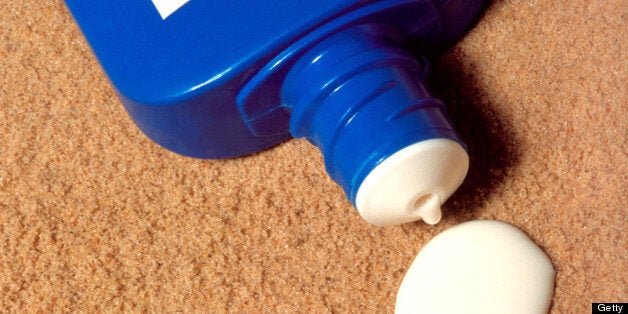
The longest day of the year behind us, the temperature is rising, Wimbledon has started - Its official, summer has arrived and the annual sunscreen debate may begin...
Like moths to the flame, we are naturally drawn to the sun but like with red wine and chocolate, there can be mixed health messages regarding how much sun exposure is good for you.
We need to have exposure to the sun because it provides us with Vitamin D - a vital ingredient for optimal health particularly bone development.
At airports across the world, holidaymakers will be pondering which sunscreen to buy. As a teenager I clearly remember the debate with friends about "how low to go..."' and "how much to buy..."
Those adolescent choices of too low SPF and too little volume of sunscreen had the usual annual effect - sunburn on day one, and peeling skin on the flight home.
Sunscreen protects the skin from the effects of ultraviolet radiation (UVA & UVB) produced by the sun. UVB is the main cause of sunburn and UVA causes more photo ageing of the skin, hence 'B' for burning and 'A' for ageing.
A sun protection factor (SPF) originates in the laboratory and it as an index of how long the skin is protected with the sunscreen before burning, compared with bare skin alone. However, as it is an index of just UVB protection it is important to remember that a high SPF only indicates a high degree of UVB protection, not UVA as well.
By definition a sunscreen stating 'broad spectrum' will deliver protection across the UVA and UVB range. Boots were the first to add this detail to their sun products by using 1- 5 stars as an indicator of high UVA protection. Recently a new label can be found on sunscreens, which is a 'UVA' in a circle and this tells you that there is UVA protection in addition to the SPF stated.
The problem is that, in this climate, lab testing tells us that SPF 15 should provide adequate protection from the sun. However, this takes little to no account of how frequently you apply your sunscreen, how much you apply, whether you are in and out of the water or your general day to day outdoor activities.
There is really good evidence that we actually only use half as much sunscreen as used in the lab tests, therefore we really do advise that everyone uses a high factor sunscreen (min. SPF 30) to at least gain a moderate-good degree of protection and to be sure of minimising the risks of burning your skin.
Top Tips
- Don't save the sunscreen just for the summer holiday, consider using from spring to autumn
- Use a broad spectrum sunscreen liberally to ensure good coverage - two coats (akin to painting the wall) reduces the chance for missed areas
- Find a sunscreen product that fits in with your lifestyle: gels, lotions and creams are available. Gels may be preferable for hair bearing skin (hairy backs or limbs!)
- All sunscreens degrade over time, so ensure your sunscreen has not passed its sell by date
- Reapply, even the once daily sunscreens, particularly if you have been in and out of the water and have towelled repeatedly
- Apply 15 minutes before sun exposure to maximise protection
Top Myths
- Adding a SPF 30 sunscreen to SPF 15 does not give SPF 45 protection
- Twice application of SPF 15 does not give SPF30 protection
- Fake tanning products do not give any UV protection
- Buying sunscreen alone will provide no protection; it has to be applied to the skin to have any effect!